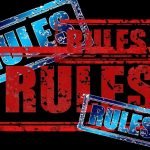From Burgers to Benefits
By using features, advantages, and benefits, marketers focus the buyer’s attention on very different things. Features focus on the product by pointing out facts, but facts alone are seldom compelling. Advantages focus the buyer’s attention on the competition, but such comparisons are only useful if the buyer is familiar with the competitor. (And who wants to focus the buyer’s attention on the competition, anyway?) Benefits explain the value of a product or service in terms of its ability to meet the buyer’s needs. They focus the buyer on himself, and self is what matters most, to most people. Yet despite the obvious differences between features, advantages, and benefits, many people still have difficulty sorting them out. One helpful mnemonic is to associate them with three classic television ads…
Travel back to 1974, a year of questioning for the United States. American combat units are being withdrawn from Vietnam, after 9 years of hard fighting, without victory. Patricia Hearst (U.C. Berkeley student and granddaughter of publisher William Randolph Hearst) is kidnapped by the Symbionese Liberation Army and later participates in a bank robbery, which is caught on tape. Cold-war enemy Russia deports Nobel Laureate Alexander Solzhenitsyn for his frank portrayal of communist oppression. Domestic inflation skyrockets, with the price of U.S. goods increasing 11.3 percent. India successfully conducts its first underground nuclear test, becoming the world’s latest nuclear power. And the House of Representatives impeaches President Richard Nixon, who resigns in disgrace.
Against a backdrop of uncertainty, fast food giant McDonald’s® launches a massive ad campaign for the Big Mac®, based on a spirit-lifting jingle,”Two all-beef patties, special sauce, lettuce, cheese, pickles, onions on a sesame seed bun.” Seven features of the Big Mac (including the mystical “special sauce”) rise to the top of American pop culture, where they will remain for more than a decade.
Ten years later, competitor Wendy’s® launches a campaign featuring unknown actress Clara Peller, a gruff-voiced, 80-year-old battle ax, who challenges the burger establishment with the phrase, “Where’s the Beef?” The ad copy unabashedly compares Wendy’s burger to its competitors, claiming “more beef than the Whopper® or the Big Mac.”
Meanwhile, Burger King® ads focus on the reason people buy burgers in the first place – hunger. Appealing the most fundamental need in Maslow’s needs hierarchy, Burger King asks, “Aren’t you hungry? Aren’t you hungry? Aren’t you hungry for Burger King now?” While other burger joints are selling based on features and advantages, Burger King promises to address consumers’ most primal need, hunger. Eat here, and you won’t be hungry anymore.
The relative success of each ad campaign is not the point. Many factors, including advertising investment, levels of competition, quality of product, distribution channels and more, had an effect on sales. Perhaps the largest factor in the effect of these three campaigns was pop culture itself. Clara Peller’s visceral appeal put the slogan “where’s the beef” on the lips of every American. In his 1984 presidential primary bid, then Vice President Walter Mondale decimated opponent Gary Hart, characterizing Hart’s policies as unsubstantial, merely by reciting the slogan in a televised debate. But regardless of their success in selling burgers, these three campaigns clearly illustrate the difference between features, advantages and benefits.



